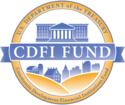APR Explained: Why a Lower Rate Is Your Highest Priority
The most annoying part of credit card debt is the monthly statement. It’s a dense plate of word salad served with a heaping dose of guilt dressing. The only part of it that’s easy to understand is the “payment due” – and that’s just the way credit card companies like it!
Credit card companies have a business model based on keeping you in debt as long as possible. They make statements difficult to comprehend with the expectation that you’ll just make the minimum payment to make that big ball of stress go away for another month. In truth, there’s a lot of information on there that can empower you as a consumer.
One of those pieces of information is Annual Percentage Rate (APR). APR is the total cost of borrowing money, expressed as a percentage of the total owed, applied per year. Let’s say you charged $1,000 for merchandise, and your APR is 24%. In a year, you’d owe $1,240. That’s the $1,000 you owe plus $240 in interest and fees (24% of $1,000).
Most commonly, APR is “compounded” – or applied – monthly. This can make the math a bit trickier. That means you’re charged 2% each month. If you owe $1,000 at the end of your monthly statement period, you’d be charged $20 in interest. Your total due would be $1,020. If you made no payment, you’d be charged interest on the new balance, which is now $1,020. Interest and fees for the second month would be $20.40.
That extra 40 cents might not seem like much, but it adds up over time. As Albert Einstein once said, the most powerful force in the universe is compound interest. Lowering your APR means your monthly payments and total costs will be lower. In many cases, it also means getting out of debt sooner. Let’s look at three steps you can take to lower the APR on your debt.
Shop around
If you wanted to buy a new blender, you’d do research, find out which one is the best, then compare prices to make sure you are getting the best price. Most people are willing to invest that much time and energy into a relatively minor household purchase. Frequently, financial tools don’t get the same treatment. People sometimes sign up for credit cards to get T-shirts or enter contests.
Think of the APR like the price tag. If you want to put the costs in real terms, take the amount you currently owe and multiply it by the listed APR. That’s the cost of the loan. You owe it to yourself to do the homework and find the best deal for your money.
Federal law requires lenders to disclose their APR before any agreement. You can take that information with you and compare it to the rates offered by other lenders. Compare the rate you’re getting to competitors and make sure you get the best price!
Negotiate
Credit agreements are contracts like any other. Their terms are subject to negotiation. There’s no magic to a printed agreement that means it can’t be altered before signing. You can make a counteroffer to secure a lower rate.
In making your offer, you should focus on things that impact your ability to pay that aren’t represented in your credit report. If you’ve gotten a new job or acquired significant assets, you might be a better risk than you appear on paper. Doing your research will let you know what kind of rates might be appropriate to offer.
If you’re already in a lending agreement, you can renegotiate. Credit card companies, for instance, might be willing to lower your interest rate in exchange for a higher monthly payment. If your rates are higher because you missed a payment, you might be able to talk the rate down by pointing to a history of on-time payments.
Consolidate
If you’ve got several high-APR loans, it might be time to investigate consolidation options. Consolidation can take several forms. You can get a debt restructuring loan to bundle all your debt into one monthly payment with an affordable APR. You might also be able to use the equity in your home to pay off your debt. Home loans tend to have the lowest APR because they are secured by the value of your house. You might also be able to take advantage of low introductory APRs on new accounts to pay your balance quickly and avoid the powerful compounding interest.
Be mindful when you consolidate your high-interest debt to avoid repayment conditions or other terms that might hurt you. Many sketchy firms offering consolidation loans have emerged, offering terms that sound too good to be true. Only get consolidation advice from people you trust.
Resource One Credit Union is proud to offer consolidation loans with competitively low rates. Because they’re offered by your community credit union, you know you’re getting a fair deal. We’re also proud to offer credit education services to help you get back into good economic shape. Whether you’re struggling under the weight of high-interest loans or are just getting started in your financial life, R1CU is happy to help. Call, click or stop by our offices!





